Related Research Articles
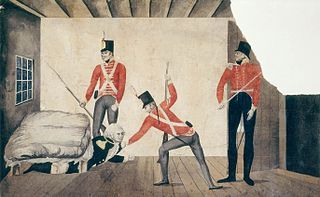
The Rum Rebellion of 1808 was a coup d'état in the then-British penal colony of New South Wales, staged by the New South Wales Corps in order to depose Governor William Bligh. Australia's first and only military coup, its name derives from the illicit rum trade of early Sydney, over which the 'Rum Corps', as it became known, maintained a monopoly. During the first half of the 19th century, it was widely referred to in Australia as the Great Rebellion.
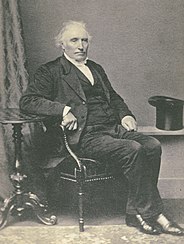
Alexander Berry was a Scottish-born surgeon, merchant and explorer who was given in 1822 a land grant of 10,000 acres (40 km2) and 100 convicts to establish the first European settlement on the south coast of New South Wales, Australia.

The Boyd massacre occurred in December 1809 when Māori residents of Whangaroa Harbour in northern New Zealand killed and cannibalized between 66 and 70 Europeans. This is reputedly the highest number of Europeans killed by Māori in a single event in New Zealand. The massacre is thought to have been in revenge for the whipping of a young Māori chief by the crew of the sailing ship Boyd.
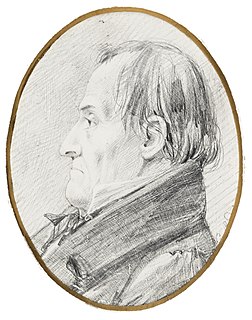
William Cox was an English soldier, known as an explorer, road builder and pioneer in the early period of British settlement of Australia.

HMS Hibernia was a 110-gun first-rate ship of the line of the Royal Navy. She was launched at Plymouth dockyard on 17 November 1804, and was the only ship built to her draught, designed by Sir John Henslow.

SY Aurora was a 580-ton barque-rigged steam yacht built by Alexander Stephen and Sons Ltd. in Dundee, Scotland, in 1876, for the Dundee Seal and Whale Fishing Company. It was 165 feet (50 m) long with a 30-foot (9.1 m) beam. The hull was made of oak, sheathed with greenheart and lined with fir. The bow was a mass of solid wood reinforced with steel-plate armour. The heavy side frames were braced by two levels of horizontal oak beams. Her primary use was whaling in the northern seas, and she was built sturdily enough to withstand the heavy weather and ice that would be encountered there. That strength proved useful for Antarctic exploration as well and between 1911 and 1917 she made five trips to the continent, both for exploration and rescue missions.

Sir Charles Nicholson, 1st Baronet was an English-Australian politician, university founder, explorer, pastoralist, antiquarian and philanthropist. The Nicholson Museum at the University of Sydney is named after him.
Bee was a sloop of 11 tons that was employed by the colonial government of New South Wales between 1801 and 1804. She sank in 1806 off Newcastle, New South Wales, Australia.
Eliza was an American brig wrecked at Fiji in 1808. Eliza had been constructed and registered at Providence, Rhode Island, United States. She carried a crew of ten and was owned by Brown & Ives.
Charlotte was a sloop that sank in 1808 off the coast of New South Wales, Australia.
His Majesty's colonial brig Elizabeth Henrietta was completed in 1816 for New South Wales service, but capsized on the Hunter River, Australia later that year with the loss of two lives. The ship was wrecked in 1825.
Trial was a ship that first appears in 1808 and that was seized by convicts and eventually wrecked on the Mid North Coast of New South Wales, Australia in 1816.
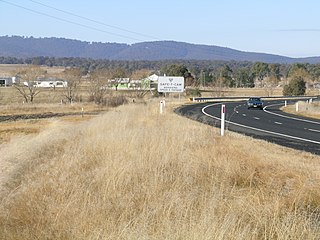
Dundee is a rural locality about 40 kilometres north of Glen Innes on the Northern Tablelands, New South Wales, Australia. It is situated on the New England Highway at the Severn River in Severn parish, Gough County, New South Wales. The elevation is 985 metres.

Elizabeth Reef, located at 29°57′25″S159°4′32″E is a coral reef in the Coral Sea. The reef is separated by a deep oceanic pass, some 47 km wide, from nearby Middleton Reef, both of which are part of the underwater plateau known as the Lord Howe Rise. It is around 175 km from Lord Howe Island and 555 km from the New South Wales coast of Australia. The Environment, Sport and Territories Legislation Amendment Act 1997 included Elizabeth Reef in Australia's Coral Sea Islands Territory.
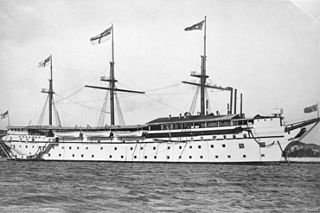
HMAS Tingira was a training ship operated by the Royal Australian Navy (RAN) between 1911 and 1927. Alexander Hall & Co. built the ship in Scotland in 1866 as the passenger clipper Sobraon; she was the largest composite-hull sailing vessel ever built. She sailed on an annual migration run between England and Australia until 1891, when she was sold to the colonial government of New South Wales for use as a reformatory ship. The vessel was then sold to the federal government in 1911, and entered RAN service. Tingira was paid off in 1927, but despite efforts to preserve the ship, was broken up in 1941.
SS Bonnie Dundee was a 193/121 Gross register tons Australian steamship which sank after a collision with the steamship SS Barrabool off Lake Macquarie, New South Wales, Australia, on 10 March 1879.
Francis was a 41 tons (bm) colonial schooner that was partially constructed at the Deptford Dockyard, England, and sent in frame aboard the Pitt to Australia to be put together for the purposes of exploration. The vessel had originally been designed for George Vancouver’s discovery voyage of the west coast of North America.

The Nimbin was a steel screw steamer built in 1927 at Copenhagen, that was the first motor vessel placed into the New South Wales coastal trade. It was owned and operated by the North Coast Steam Navigation Company and was the first Australian registered merchant ship to be lost during World War II when it struck a mine laid by the German auxiliary cruiser Pinguin. The Nimbin was on its way from Coffs Harbour to its home port, Sydney, with a cargo of bundled three-ply timber and a cargo of pigs. One third of the ship was blown away and it sank in three minutes. Seven men were killed. The remaining thirteen clung to bundles of plywood. Some hours later an air force plane from RAAF Base Rathmines saw the survivors and directed the coastal ship SS Bonalbo to the scene to retrieve them.
Andrew Thompson was transported at the age of 18 to New South Wales, arriving in Sydney on 14 February 1792. He rose to become a respected chief constable in the Hawkesbury district, a successful farmer and businessman, and eventually the wealthiest settler in early colonial Australia. In 1810 he was the first ex-convict to be appointed as magistrate.

The Dundee Arms Hotel, commonly called The Dundee Arms, is a heritage-listed pub located at 171 Sussex Street, in the Sydney central business district, in the City of Sydney local government area of New South Wales, Australia. It was built in 1860. It was added to the New South Wales State Heritage Register on 2 April 1999.
References
- ↑ Australian Shipwrecks - vol1 1622-1850, Charles Bateson, AH and AW Reed, Sydney, 1972, ISBN 0-589-07112-2 p45